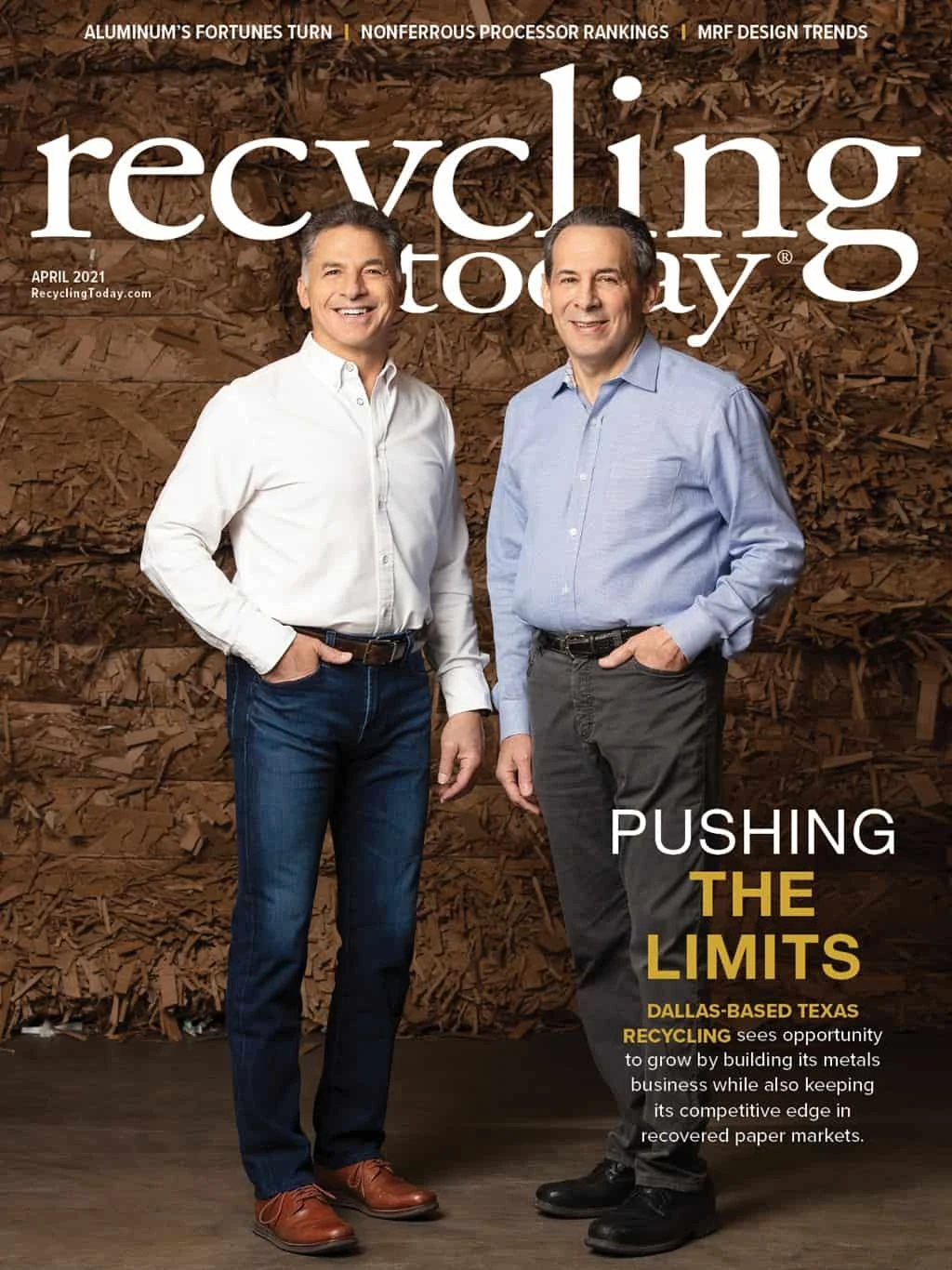Scrap processors point to strong pricing for copper and aluminum scrap, though the volatility in copper pricing is making at least one scrap processor long for consistency.
“I would like to see a little bit of stability,” says Todd Safran, chief operating officer of copper and brass processor Safran Metals in Chicago. “Everyone loves to see a higher market, but it’s a matter of knowing that the price today will be similar to the price tomorrow.”
The Comex spot copper contract reached $3.99 per pound March 5, a decrease of 10.3 cents per pound from the previous week, according to Davis Index. During the last week of February, the Comex spot copper contract had reached $4.30 per pound.
This volatility can mean that scrap consumers are interested one day and not the next day, Safran says. “When we see the price pull back, consumers jump in to buy.” However, he adds, “A lot of consumers are taking what they need and nothing more.”
”Spreads are very tight and there seems to be a shortness of scrap. ... We’re 30 to 60 days away from getting back to equilibrium.” – Matt Kripke of Kripke Enterprises Inc. says of aluminum scrap
While copper scrap buying is somewhat muted currently, the growth of green energy could lead to increased demand for the red metal in the future, which likely will increase demand for copper scrap.
During the Fastmarkets Copper Seminar March 11-12, Boris Mikanikrezai, a researcher with Fastmarkets, said copper demand will strengthen as the world transitions to green energy. He noted that offshore wind energy requires 22 pounds of copper per kilowatt, which is 4.5-times more than nuclear energy and five-times more than coal energy.
More generally, global industrial production is forecast to increase by 6 percent this year, Mikanikrezai said, led by the automotive sector, prompting increased demand for refined copper. He predicted a 16 percent increase in motor vehicle production this year.
Longer term, Mikanikrezai said, the electric vehicle (EV) “revolution” would lead to increased refined copper demand, noting that a battery electric vehicle (BEV) consumes roughly 183 pounds of refined copper compared with the 51 pounds used in internal combustion engine vehicles (ICEVs). A plug-in hybrid electric vehicle uses about 132 pounds of refined copper, which is roughly three times more than an ICEV.

He said global BEV sales are expected to grow by 26 percent per year on average by 2030, with Europe likely to experience growth of 28 percent, followed by China at 27 percent and the United States at 23 percent.
While these figures could point to growing demand for copper scrap in the future, demand for aluminum scrap presently is strong.
“Spreads are very tight and there seems to be a shortness of scrap,” says Matt Kripke of aluminum scrap brokerage firm Kripke Enterprises Inc., headquartered in Toledo, Ohio. He adds that demand for coil, billets, slab and cans has exceeded the pace of scrap generation, which has caused spreads to tighten.
“We’re 30 to 60 days away from getting back to equilibrium,” he says as of March 11. Once scrap generation catches up with demand, Kripke says he expects the aluminum scrap spread to begin to widen.
Some of that scrap is likely to come from the winter storms that hit much of the country in February, particularly Texas, where ice and snow are rare, Kripke says, as damaged gutters and downspouts are replaced. “A lot of scrap will hit the market.”

Explore the April 2021 Issue
Check out more from this issue and find your next story to read.
Latest from Recycling Today
- Orion ramping up Rocky Mountain Steel rail line
- Proposed bill would provide ‘regulatory clarity’ for chemical recycling
- Alberta Ag-Plastic pilot program continues, expands with renewed funding
- ReMA urges open intra-North American scrap trade
- Axium awarded by regional organization
- Update: China to introduce steel export quotas
- Thyssenkrupp idles capacity in Europe
- Phoenix Technologies closes Ohio rPET facility





